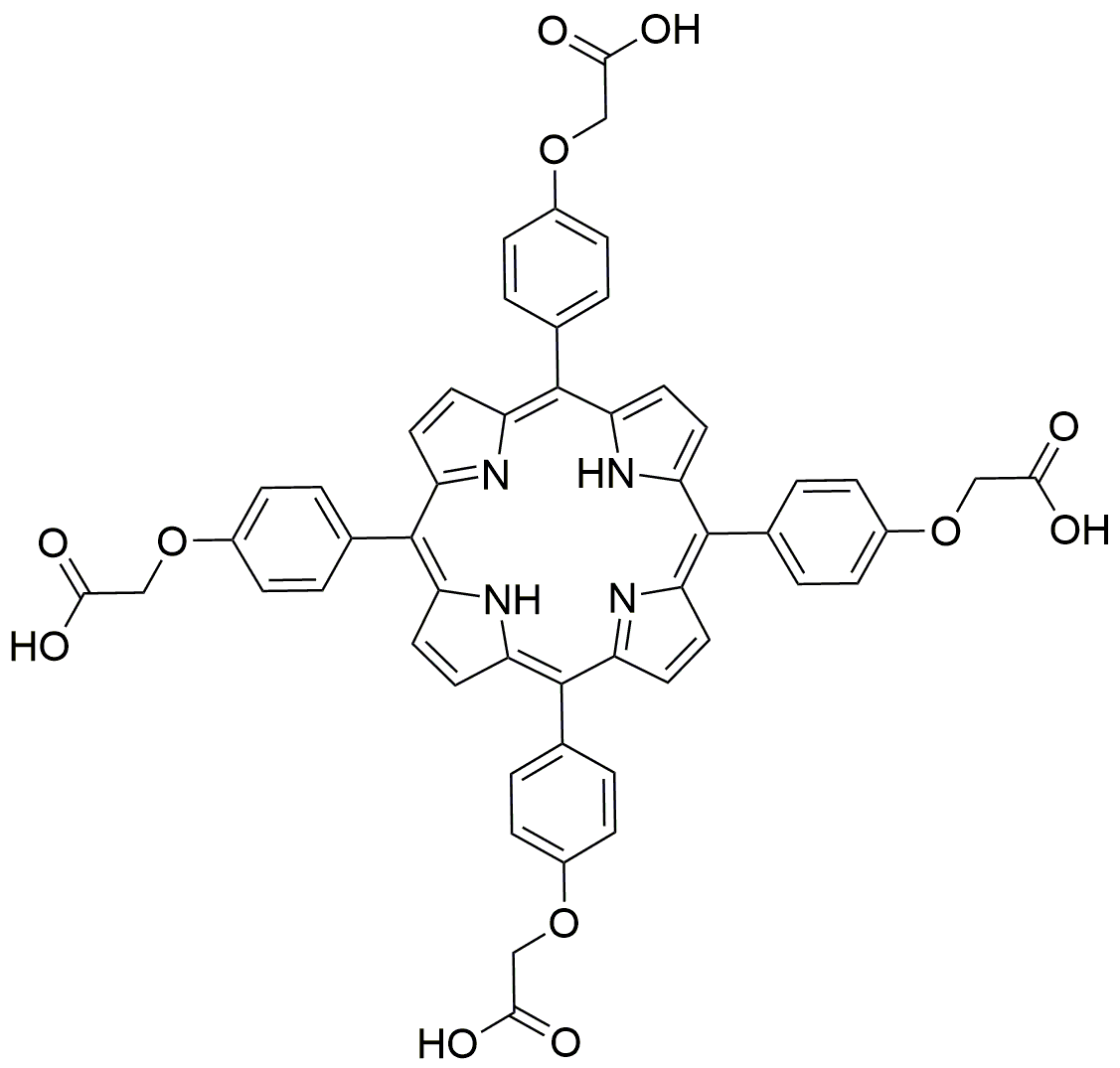5,10,15,20-Tetrakis(4-carboxymethyloxyphenyl)porphyrin is widely utilized in research focused on:
- Photodynamic Therapy (PDT): This compound is effective in treating certain cancers by generating reactive oxygen species upon light activation, helping to destroy tumor cells while minimizing damage to surrounding healthy tissue.
- Solar Energy Conversion: Its unique structure allows for efficient light absorption, making it a candidate for use in solar cells and other energy conversion technologies, enhancing the efficiency of renewable energy sources.
- Biomarker Development: The compound's ability to bind selectively to specific biomolecules aids in the development of sensitive diagnostic tools for detecting diseases, improving early diagnosis and treatment outcomes.
- Environmental Remediation: It can be employed in the degradation of pollutants through photocatalytic processes, offering a sustainable solution for cleaning up contaminated water and soil.
- Research in Nanotechnology: Its properties make it suitable for creating nanocarriers for drug delivery, allowing for targeted therapy with reduced side effects, which is particularly beneficial in pharmaceutical applications.
General Information
Properties
Safety and Regulations
Applications
5,10,15,20-Tetrakis(4-carboxymethyloxyphenyl)porphyrin is widely utilized in research focused on:
- Photodynamic Therapy (PDT): This compound is effective in treating certain cancers by generating reactive oxygen species upon light activation, helping to destroy tumor cells while minimizing damage to surrounding healthy tissue.
- Solar Energy Conversion: Its unique structure allows for efficient light absorption, making it a candidate for use in solar cells and other energy conversion technologies, enhancing the efficiency of renewable energy sources.
- Biomarker Development: The compound's ability to bind selectively to specific biomolecules aids in the development of sensitive diagnostic tools for detecting diseases, improving early diagnosis and treatment outcomes.
- Environmental Remediation: It can be employed in the degradation of pollutants through photocatalytic processes, offering a sustainable solution for cleaning up contaminated water and soil.
- Research in Nanotechnology: Its properties make it suitable for creating nanocarriers for drug delivery, allowing for targeted therapy with reduced side effects, which is particularly beneficial in pharmaceutical applications.
Documents
Safety Data Sheets (SDS)
The SDS provides comprehensive safety information on handling, storage, and disposal of the product.
Product Specification (PS)
The PS provides a comprehensive breakdown of the product’s properties, including chemical composition, physical state, purity, and storage requirements. It also details acceptable quality ranges and the product's intended applications.
Certificates of Analysis (COA)
Search for Certificates of Analysis (COA) by entering the products Lot Number. Lot and Batch Numbers can be found on a product’s label following the words ‘Lot’ or ‘Batch’.
*Catalog Number
*Lot Number
Certificates Of Origin (COO)
This COO confirms the country where the product was manufactured, and also details the materials and components used in it and whether it is derived from natural, synthetic, or other specific sources. This certificate may be required for customs, trade, and regulatory compliance.
*Catalog Number
*Lot Number
Safety Data Sheets (SDS)
The SDS provides comprehensive safety information on handling, storage, and disposal of the product.
DownloadProduct Specification (PS)
The PS provides a comprehensive breakdown of the product’s properties, including chemical composition, physical state, purity, and storage requirements. It also details acceptable quality ranges and the product's intended applications.
DownloadCertificates of Analysis (COA)
Search for Certificates of Analysis (COA) by entering the products Lot Number. Lot and Batch Numbers can be found on a product’s label following the words ‘Lot’ or ‘Batch’.
*Catalog Number
*Lot Number
Certificates Of Origin (COO)
This COO confirms the country where the product was manufactured, and also details the materials and components used in it and whether it is derived from natural, synthetic, or other specific sources. This certificate may be required for customs, trade, and regulatory compliance.


